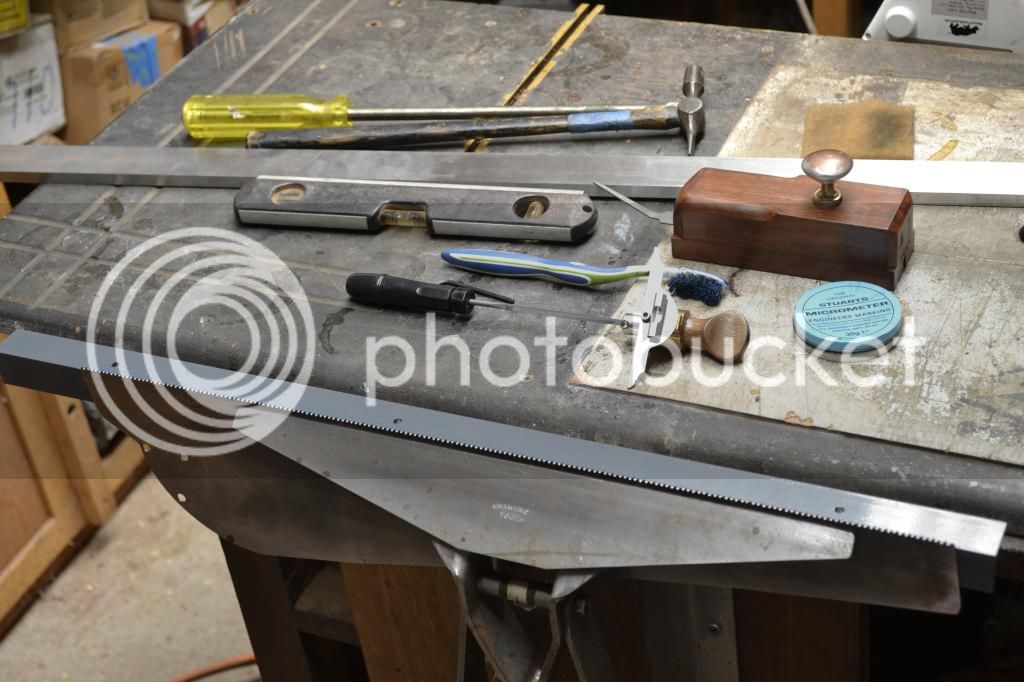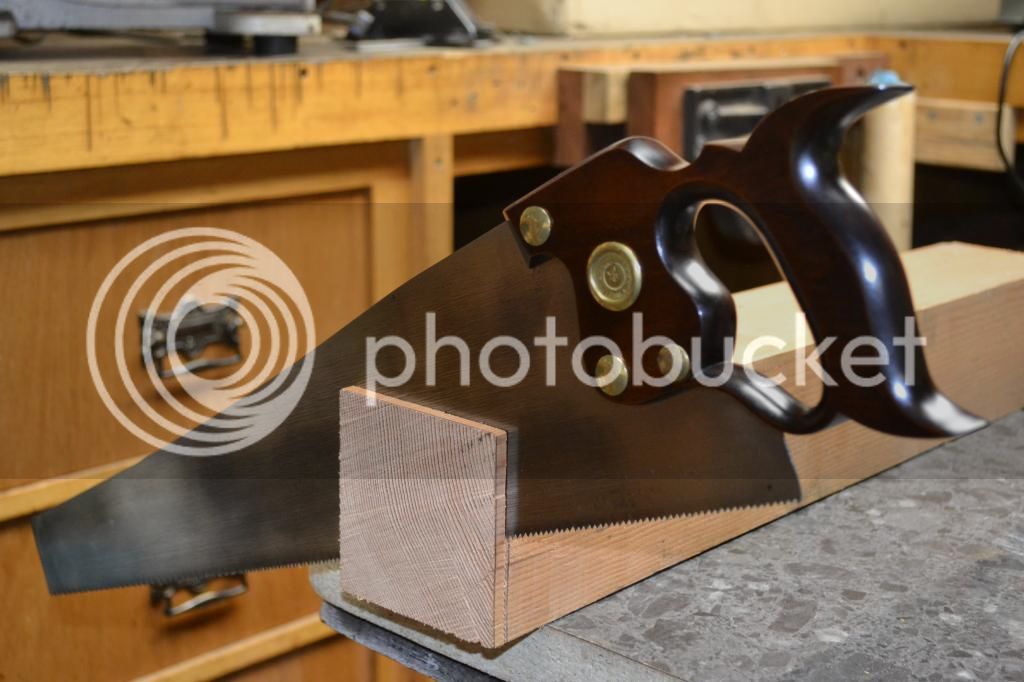swagman
Established Member
Hi all. I purchased this panel saw around 10 years ago. Its a Disston D8 Panel Saw; 20" saw plate; 10 ppi; crosscut tooth. Its been wrapped in storage during that time period awaiting the day I could get around to refurbishing it.
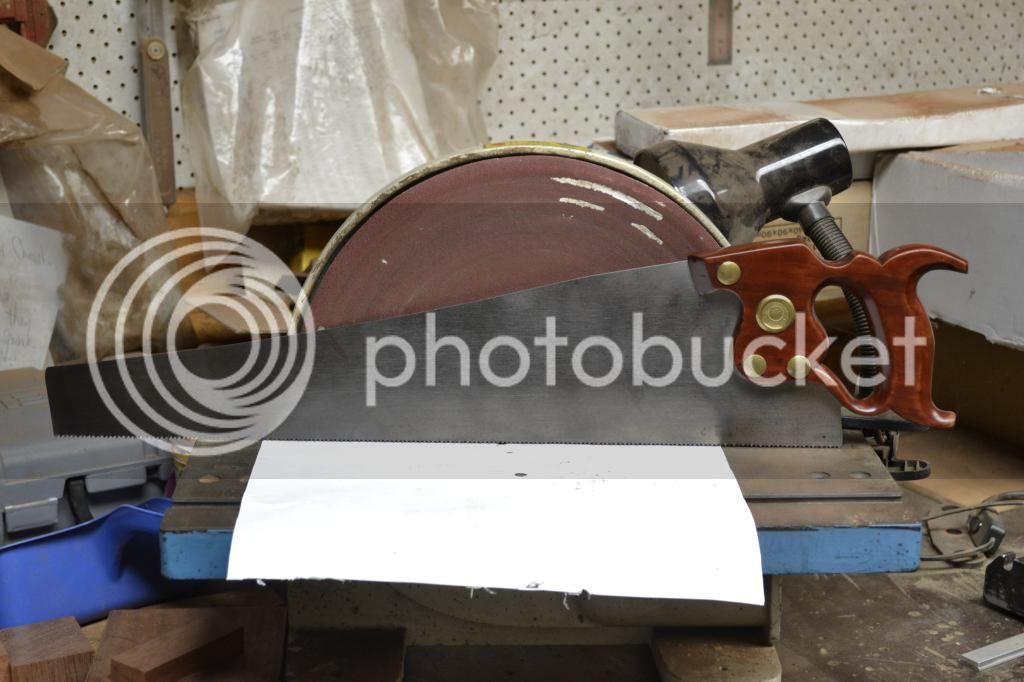
That day had finally arrived.
The 1st job was to remove the ugly finish that the previous owner had hastily applied. Its rather bulky original handle shape was typical of its circa. I felt the need to include some reshaping to improve its general appearance.
http://www.disstonianinstitute.com/d8page.html
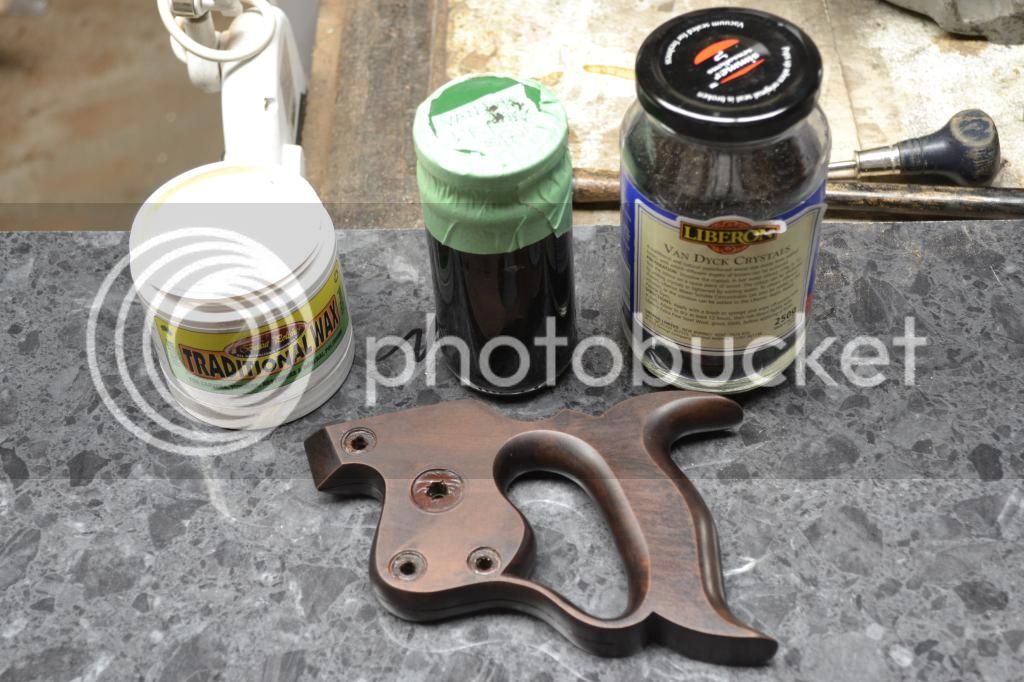
Before;
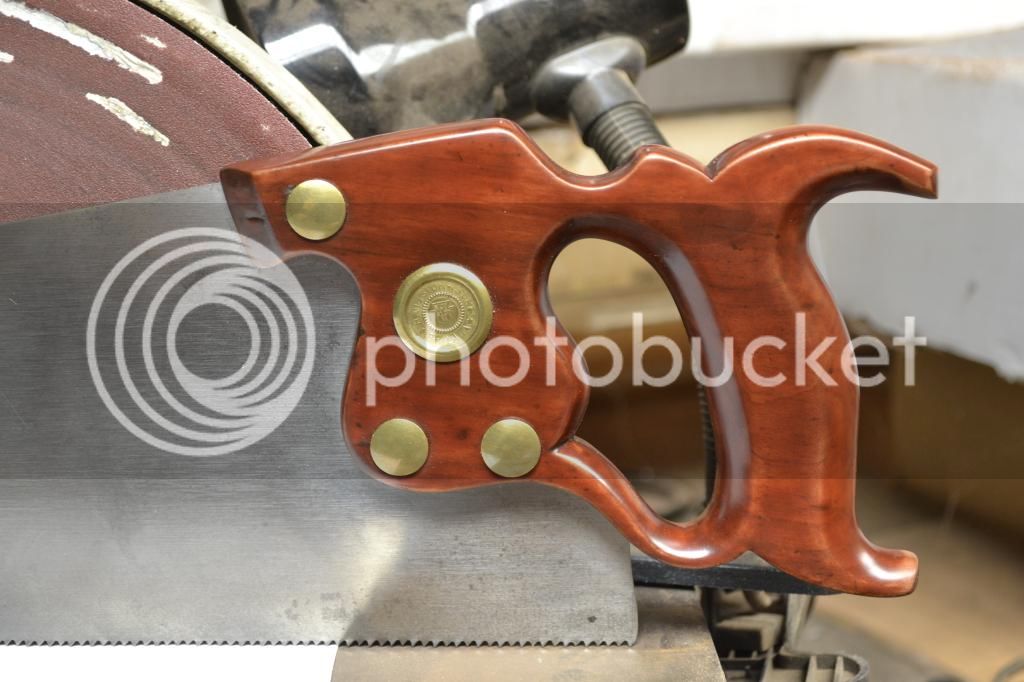
After;
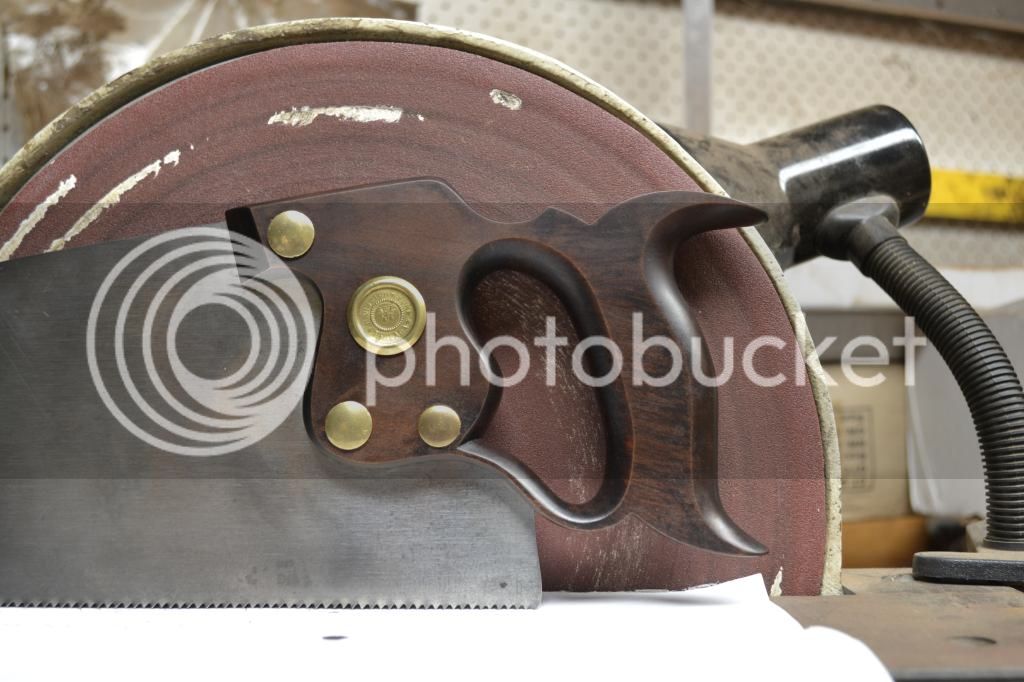
Next thing to do was darken the etching so it stood out more clearly.
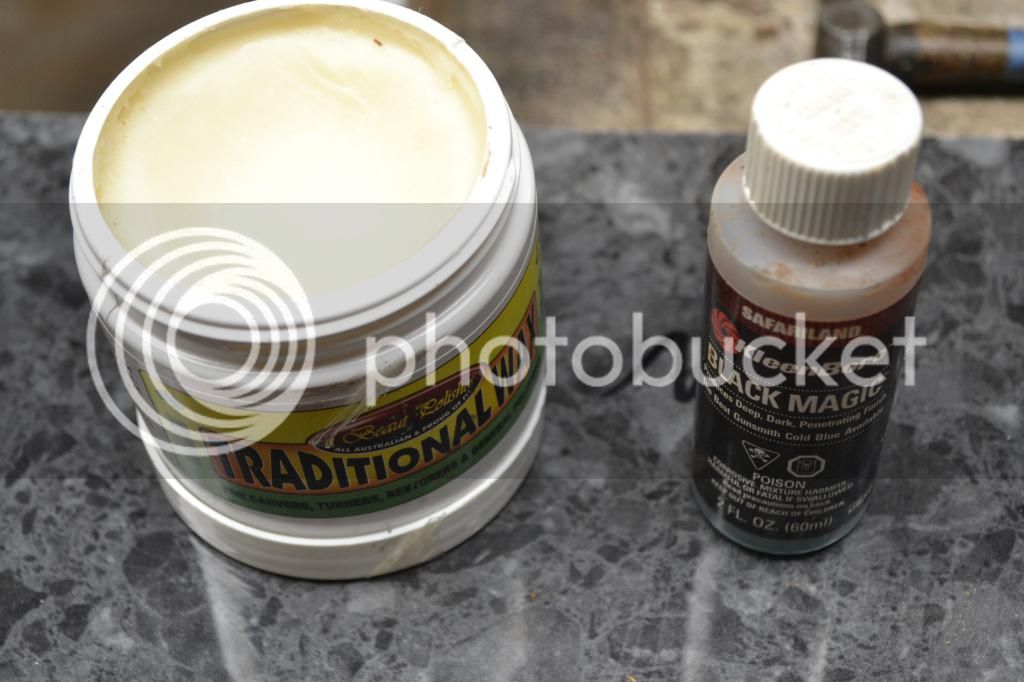
Before;
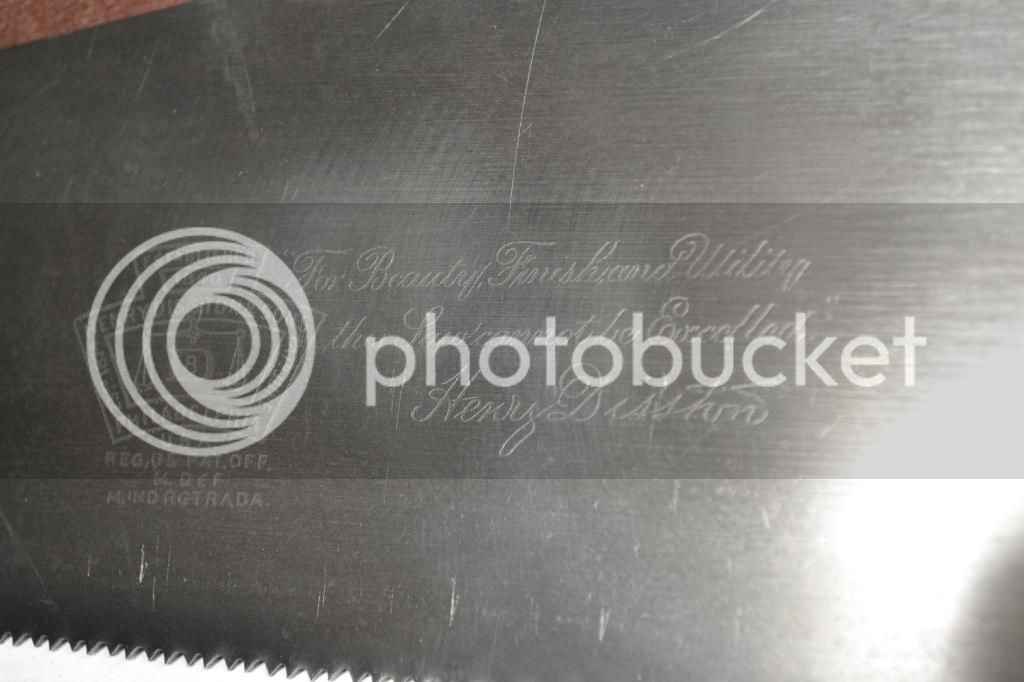
After;
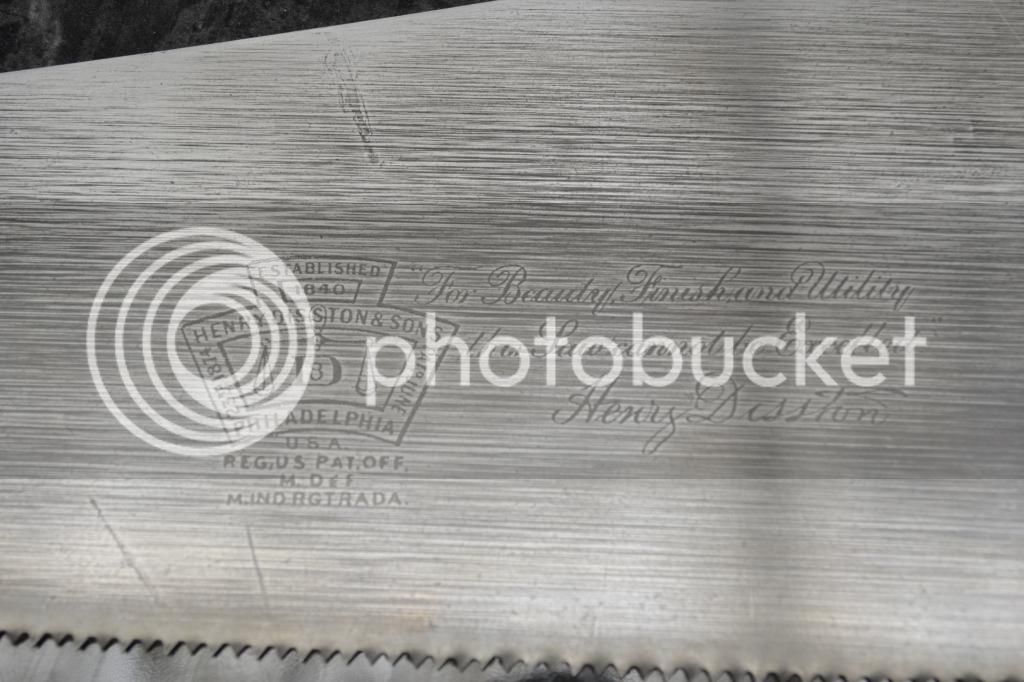
With the hyphenated etching, I was able to determine the age of the saw as being post 1928. The H Disston & Sons medallion that's has been fitted to the saw is clearly not original, as its use stopped in 1917. Not of great concern.
http://www.disstonianinstitute.com/etch.html
The saw teeth are in excellent condition, and will only require a light sharpen when time permits to allow this saw to be in excellent user condition.
I would appreciate your thoughts to the changes I made to the saw handle's shape.
regards Stewie;

That day had finally arrived.
The 1st job was to remove the ugly finish that the previous owner had hastily applied. Its rather bulky original handle shape was typical of its circa. I felt the need to include some reshaping to improve its general appearance.
http://www.disstonianinstitute.com/d8page.html

Before;

After;

Next thing to do was darken the etching so it stood out more clearly.

Before;

After;

With the hyphenated etching, I was able to determine the age of the saw as being post 1928. The H Disston & Sons medallion that's has been fitted to the saw is clearly not original, as its use stopped in 1917. Not of great concern.
http://www.disstonianinstitute.com/etch.html
The saw teeth are in excellent condition, and will only require a light sharpen when time permits to allow this saw to be in excellent user condition.
I would appreciate your thoughts to the changes I made to the saw handle's shape.
regards Stewie;





